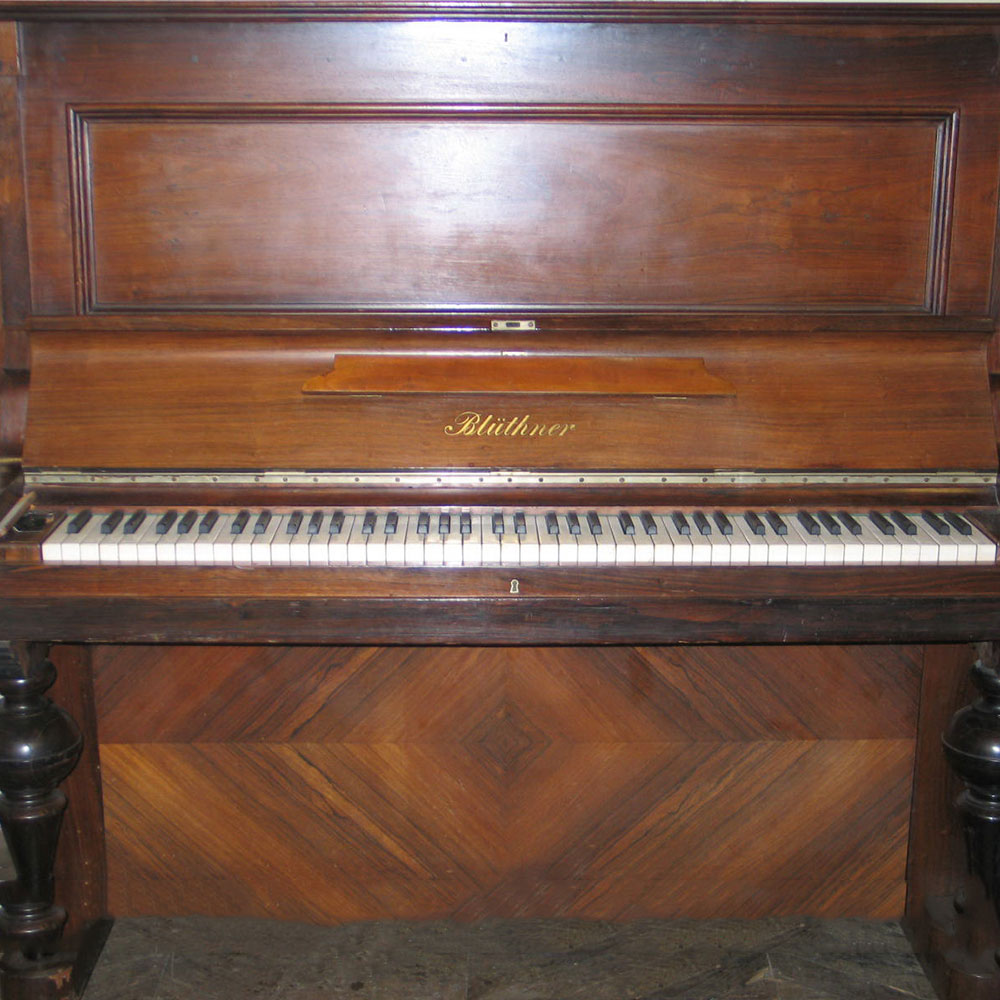Wooden framed upright pianos (1860-1920)
"Imagine you come across a piano that looks like these. How charming, you think. You love their antique look, which would go very well with your decor. The low price convinces you to finally buy yourself a piano... big mistake! These pianos are from the end of the nineteenth century, and have wooden frames, straight or diagonal strings and a so-called “bayonet” action with overdampers.
The design of such pianos is now obsolete, as they have a wooden rather than a cast-iron frame, or some models have metal braces. For this reason, they often cannot be tuned to the pitch of a tuning fork (A 440Hz) in their current state. Strings are diagonal or straight rather than crossed. They have an action that uses hoppers nicknamed “bayonets” which operate dampers positioned above the strings. This system of dampers is always unsatisfactory and pianos from this period are sometimes called “singing pianos” because they continue to sound even after the dampers have been engaged. Their action is noisy and imprecise, with only 85 notes (A-A). If you see this action in a piano, don’t buy it or you will be disappointed! It may seem like a bargain, but it won’t be able to give you musical satisfaction. You’ll have to get used to a flat instrument and an unreliable action that plays too lightly or too heavily."




